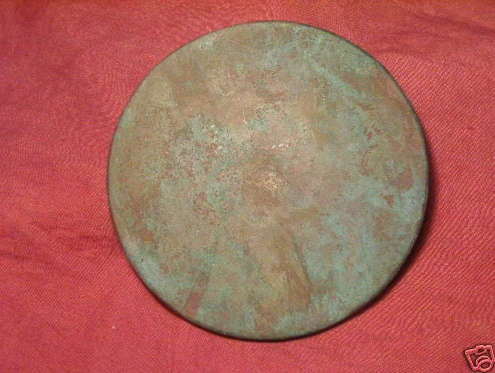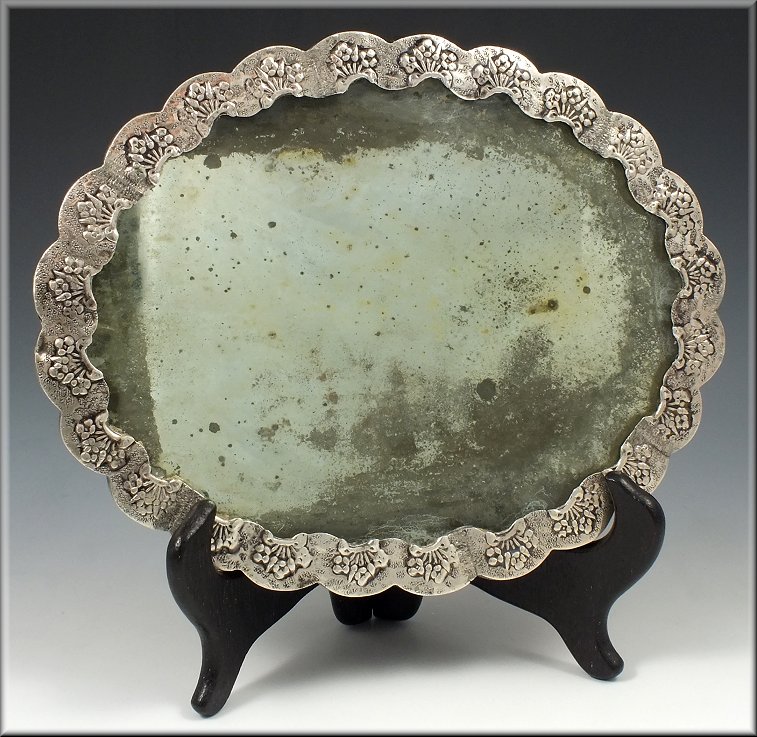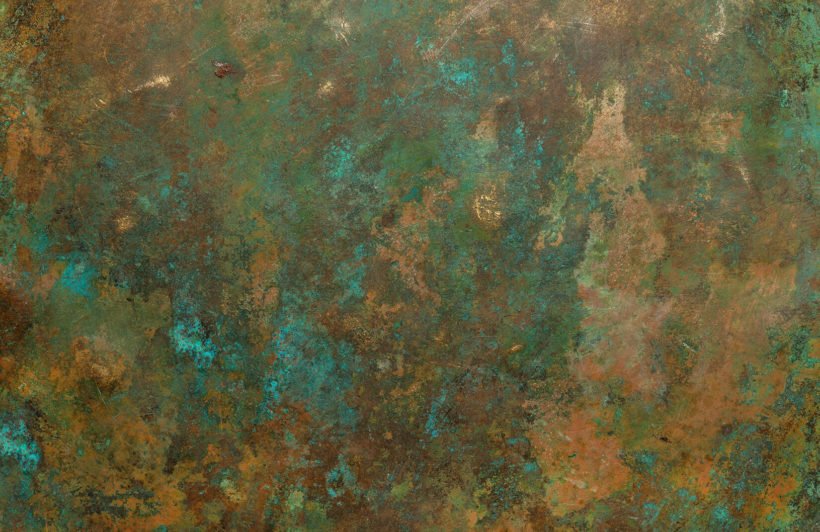FWP:
SETS
JALVAH: {7,4}
MIRROR: {8,3}
SPRINGTIME: {13,2}
This ghazal in its divan form has no opening-verse; in its original form, its opening-verse was {47,3x}.
The spring breeze is so pure and ineffable that it's invisible. It's like a mirror so bright and lustrous that it can hardly be seen at all, and can only act as a pure reflector. Only when the metal mirror contains some verdigris or rust do we actually notice it as a mirror, and not simply see what is reflected in it. The cloudy green of verdigris, as Nazm points out, has a fine affinity with the greenery of the garden.
At least, this is the best I can make of the metaphor. But I'm not entirely satisfied. What does it mean to imagine a metal mirror that is so light or clear or pure as to be invisible? How can it fail to still look like a piece of metal? And since it would presumably then be an ideal reflecting surface, why can't it produce jalvah through what it reflects? If what is desired is its own jalvah rather than that of what it reflects, then why is the garden part of the spring breeze's own intrinsic jalvah , rather than (as seems more logical) part of what it reflects? Should we then say that the green garden-verdigris on the breeze-mirror is what alerts us to the fact that not just the spring breeze but the whole physical world is a mirror, presumably of God's presence?
Ghalib certainly knew glass mirrors, as can be seen indirectly
in {34,2}, when he insists that this
particular verse refers not to a glass but to a metal one. If we were permitted to think
of a glass mirror, I would love to imagine that the garden is the metallic backing that turns the
transparent glass of the breeze into a reflective mirror. Although I know
this is my own invention, I still can't help but like it.
ABOUT zangār : Clearly the word zangār (see the definition above) requires us to imagine a metal mirror, one that would have on it some verdigris, in the form of a rusty greenish patina. (Verdigris is what gives the Statue of Liberty its present color.) Other verses about such verdigris: {48,10} (in the 'rainy season'); {60,10}, which uses the term zangār ; {63,1}; {113,10x}, which plays on zang ; {217,2}, about verdigris on the edge of a sword; {221,4x}, about the zangār of a mirror; {254x,2}, with a 'veil of zang '; {320x,4}, mirrors with no zang ; {392x,2}, zang on an iron pen
Here's a look at
a bronze mirror covered with zangār (from the Khurasan region, c.1200's, about 10" in diameter): *the back* and the front:

Here's an Ottoman mirror, from the early 1800's-- *the back* and the front:

And here's how beautiful verdigris can be:

Nazm:
That is, when verdigris appeared on the mirror of the spring breeze, then greenery came into being. This is an allegory of the fact that glory/appearance cannot be incorporeal and without relationship to substance. (42-43)
== Nazm page 42